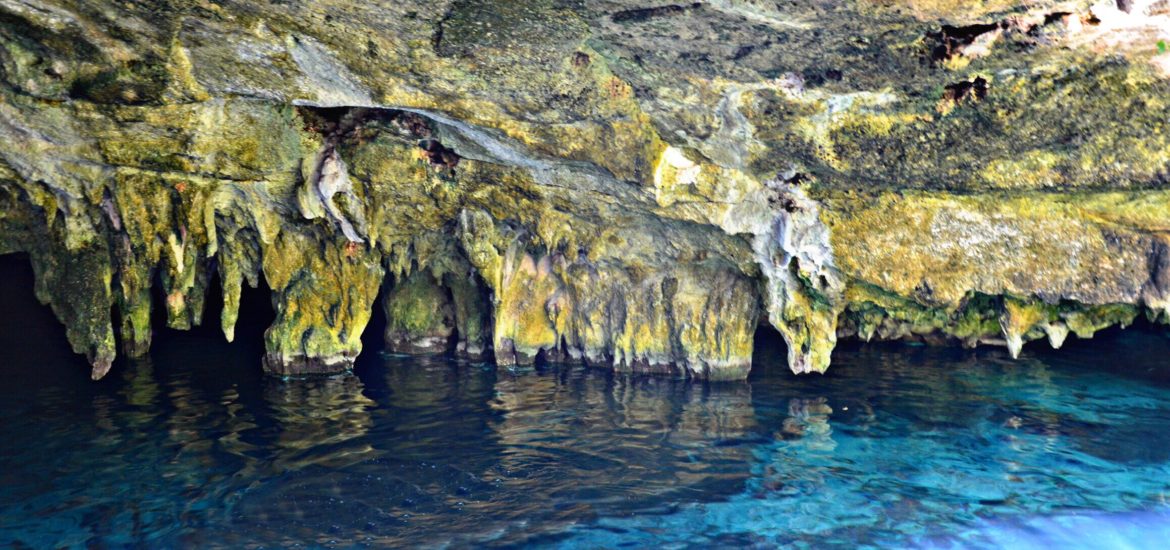What I lacked in enthusiasm for Mayan ruins, I made up for at Gran Cenote. Maybe it’s because I have this weird affinity for caves but when I climbed down into that sparkling abyss, I felt like my 8-year-old tubby self had just walked into Willy Wonka’s chocolate factory. Usually when I have high expectations, I’m let down because it’s been so hyped. I thought maybe this was going to be one of those. But this wasn’t Venice, it was Paris – it was everything I thought it was going to be and more.
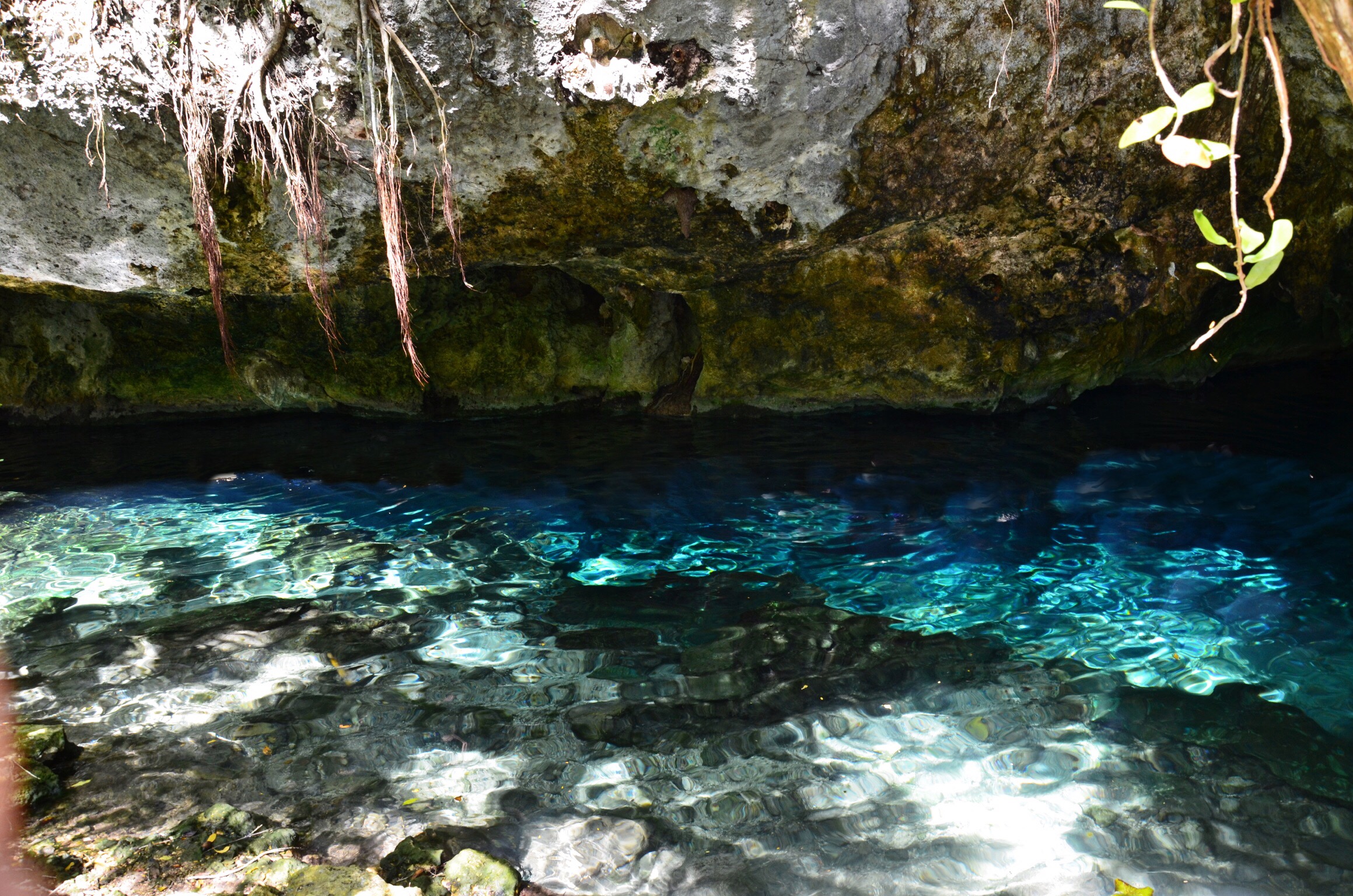
The awe I experienced might be attributed to novelty. I’ve been in caves before, but ones I walked in or took a boat into. This was my first time in a cenote, one that I could swim in, partially exposed to the light, and underneath the surface, seemingly endless. It made me seriously regret not getting scuba certified when I had a really good opportunity to do so. And I rarely regret things.
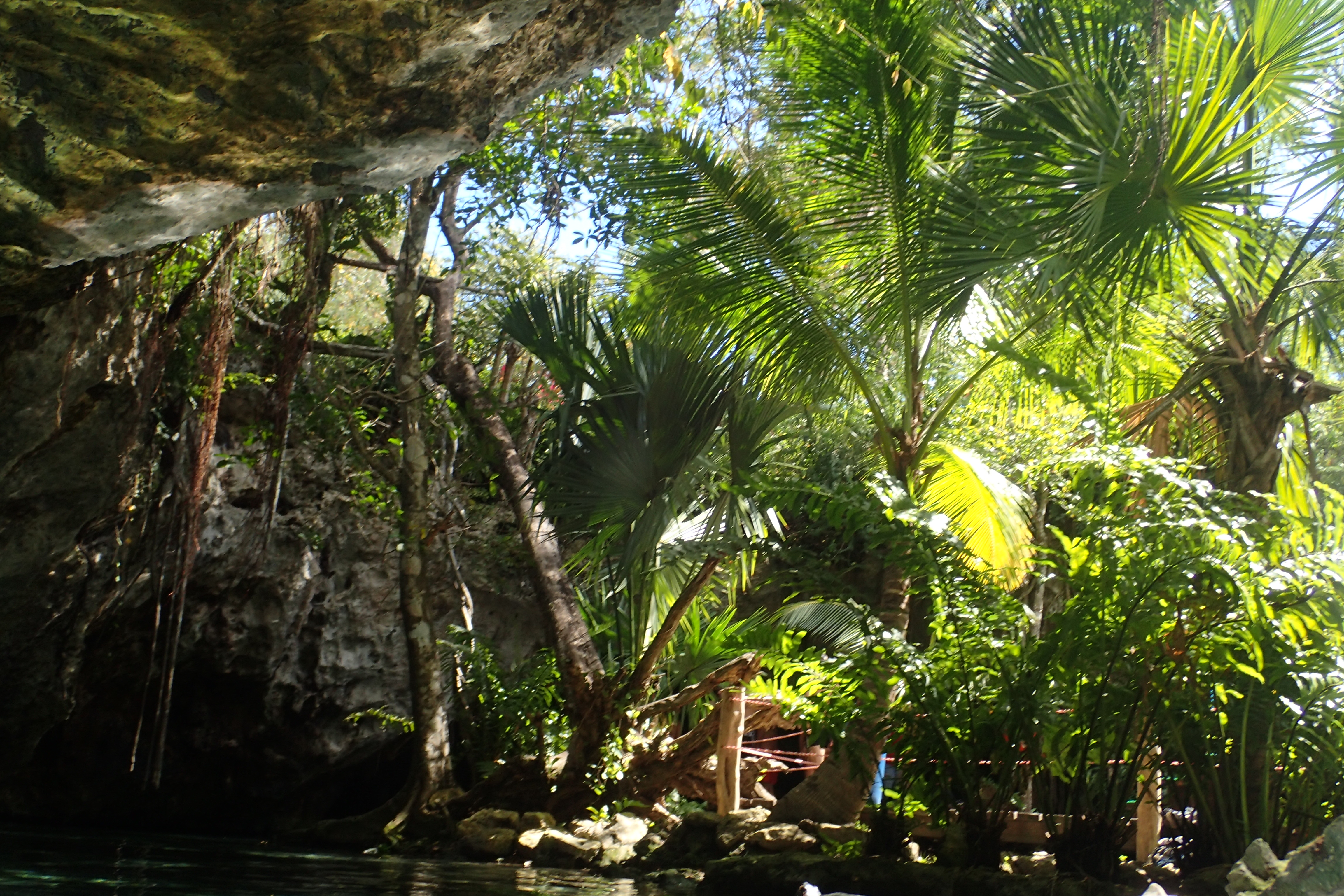
A cenote is derived from a Mayan term for a sinkhole of limestone, which allows for pristinely clear groundwater to surface and fill the hole, making their sacred watering holes/a natural swimming pool of my dreams. They are predominantly known to exist in the Yucatan peninsula with over 7,000 in the area, many of which are linked through an underground river system. The majority are not developed like Gran Cenote and others who have seen cenotes a plenty might think I’m being touristy and naive, just like I felt about the Chichen Itza. But for my first time, it was glorious.
I had actually wanted to go to Sac Actun because look at it:

But it’s not the easiest to get to and you need a guide to take you through the navigable part of the cave system. So we settled for Gran Cenote since we were short on time after a morning in Tulum and I secretly think our driver just didn’t want to make the trek to Sac Actun (off the main road from Cenote Dos Ojos) so he talked us into going to Gran Cenote since the entrance is right off the main highway to Coba, 20 minutes outside of Tulum there are plenty of spots for him to park just outside the gate. You buy your ticket at the window (150 pesos) and inside there are basic but lockable stalls for you to change and you’re required to rinse off before getting in. The showers are open-air and have a handle pulley, like the kind from science lab at school if you spill chemicals on yourself. The water temp and suddenness of it is like doing the ice-bucket challenge. That part was not particularly enjoyable.
To get to the cenote, you go down a set of stairs and at the base of the stairs is the platform where there are lockers and a manned booth to rent snorkels and life vests (they require an ID to hold). Or you can bring your own and they do not have towels. Surprisingly, it wasn’t as busy as I expected it to be. There were people but it wasn’t packed, and since it is one of the largest, there was room to spread out.
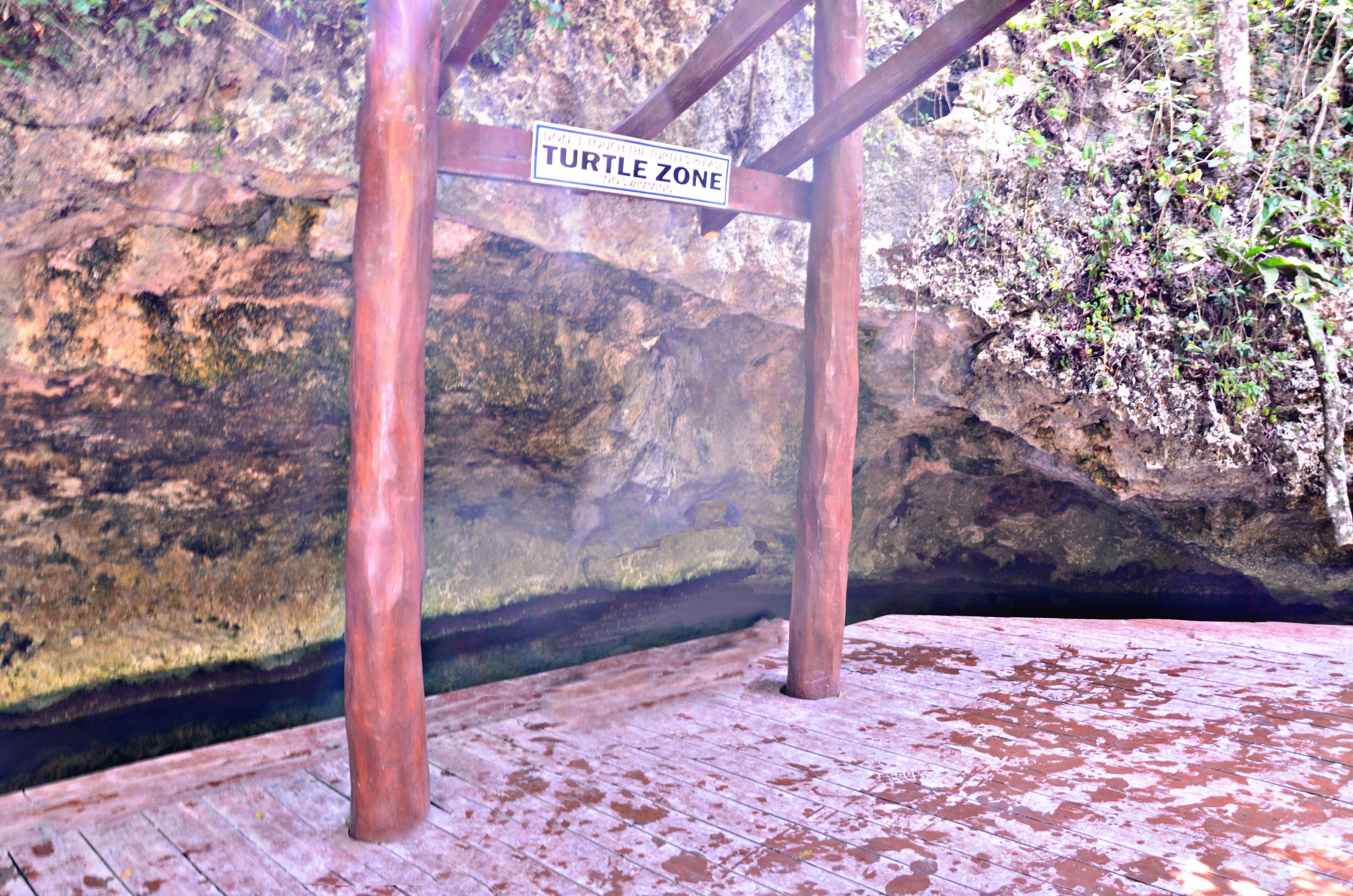
My initial reaction was excitement to get into the clear looking cave part, along with slight hesitation as to why some parts looked swampy like an alligator was going to slither by. But those were roped off and somehow that felt safe so I got right in.
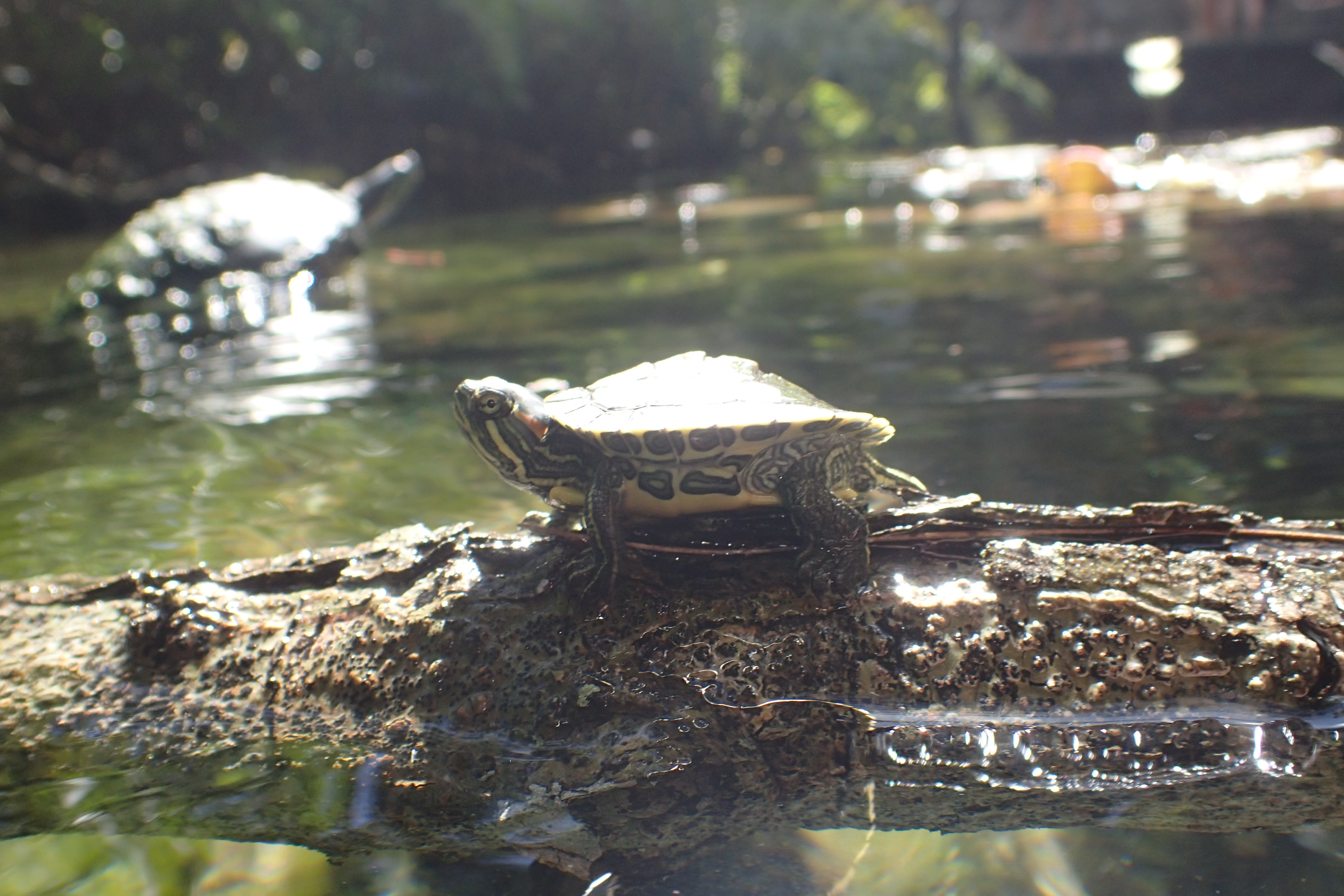
Some parts of the rocks below were slippery, but mostly, I couldn’t reach the bottom because I’m vertically challenged and it’s deep. But with my rented goggles, I could see a whole different landscape below the water of stalagmites, stalactites, and small fish. It was like the iceberg effect where you only see a fraction of it above the waterline and below it is inexplicably incredible. The fish are sneaky, though. They’ll come up and nibble at your skin like in the Japanese foot spas. Except this is in Mexico and free (sorta) and you have to hold still but then it tickles and they scatter away when you giggle.

I highly recommend Gran Cenote for first timers, especially if short on time and doing it as part of a day trip to Tulum. On my next trip to Riviera Maya, I plan to do Sac Actun, Dos Ojos, and Rio Sagrado. And if for some reason I get dragged back to Chichen Itza, I’ll go only for Ik Kil.

